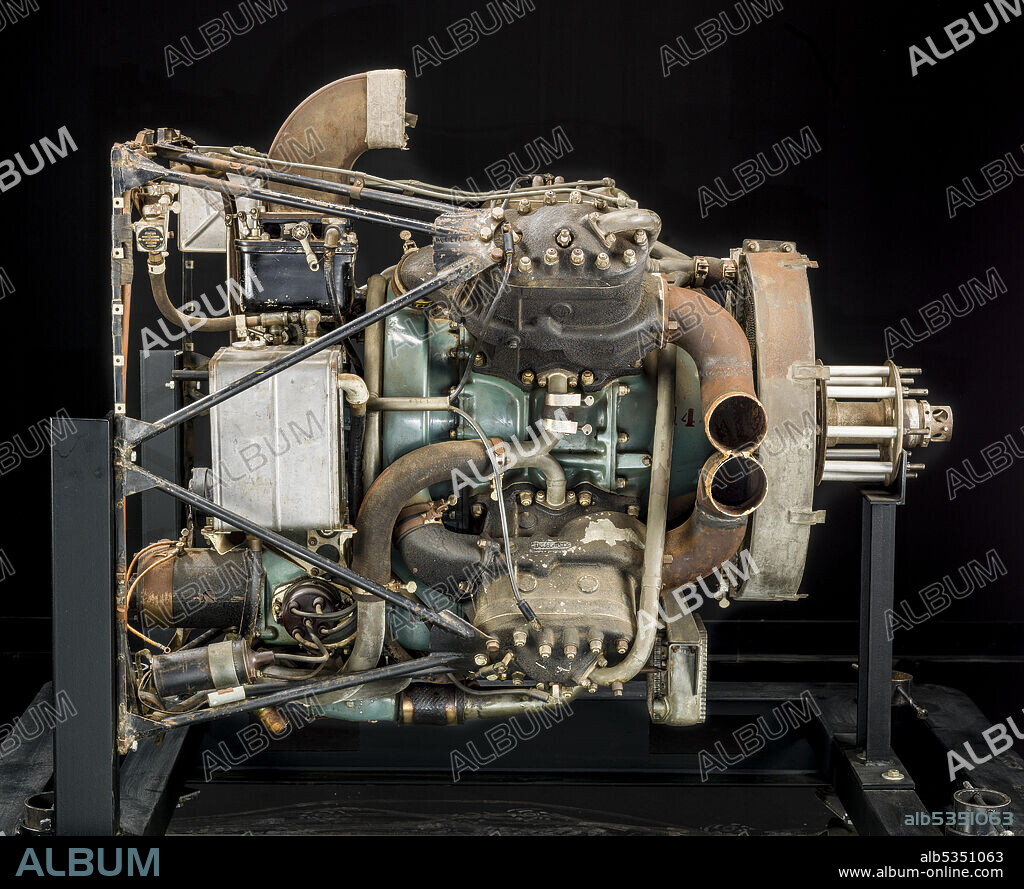alb5351063
GENERAL MOTORS. General Motors X-250, Radial 4 (8) Engine, ca. 1940. Creator: General Motors.

|
Añadir a otro lightbox |
|
Añadir a otro lightbox |



¿Ya tienes cuenta? Iniciar sesión
¿No tienes cuenta? Regístrate
Compra esta imagen

Autor:
Título:
General Motors X-250, Radial 4 (8) Engine, ca. 1940. Creator: General Motors.
Descripción:
Ver traducción automática
A direct-drive, liquid-cooled, supercharged, two-stroke cycle engine, this General Motors engine was a very unusual design incorporating four cylinder blocks, each containing two cylinder bores with a common combustion chamber. At least one application was a small radio controlled target aircraft, and it also powered an Oldsmobile Eight automobile. Flight testing by famed racing and test pilot Tony LeVier successfully continued through 1940 as high as 7.6 km (25,000 ft.) in a Cessna Airmaster C-165, but other pressing war priorities led to termination of the project. A 1942 engineering report written by GM's Research Laboratories, led at the time by its highly regarded director Charles F. Kettering, stated that the engine had excellent power/displacement and power/weight ratios, low fuel consumption, and very low vibration characteristics. Removed from the Cessna in June 1946, the aircraft was later refurbished and flown again.
Personas:
Crédito:
Album / Heritage Art/Heritage Images
Autorizaciones:
Modelo: No - Propiedad: No
¿Preguntas relacionadas con los derechos?
¿Preguntas relacionadas con los derechos?
Tamaño imagen:
6600 x 5386 px | 101.7 MB
Tamaño impresión:
55.9 x 45.6 cm | 22.0 x 18.0 in (300 dpi)
Palabras clave:
ACERO • ALUMINIO • AMERICA • AMERICANO • AVIACION • AVION • AÑOS CUARENTA • CERAMICA • COBRE • COLOR • COMPAÑIA • DÉCADA • EDUCACION • ESTADOS UNIDOS DE AMERICA • ESTADOS UNIDOS • GENERAL MOTORS • INDUSTRIA • INDUSTRIAL • INDUSTRIAS • MOTOR • NATIONAL AIR AND SPACE MUSEUM • OBJETO • PAÍS • PINTURA • PROPULSION • SIGLO XX • SIGLO • SMITHSONIAN INSTITUTION • TECNOLOGÍA • TRANSPORTE AEREO • TRANSPORTE • VIDRIO • VUELO
 Pinterest
Pinterest Twitter
Twitter Facebook
Facebook Copiar enlace
Copiar enlace Email
Email
